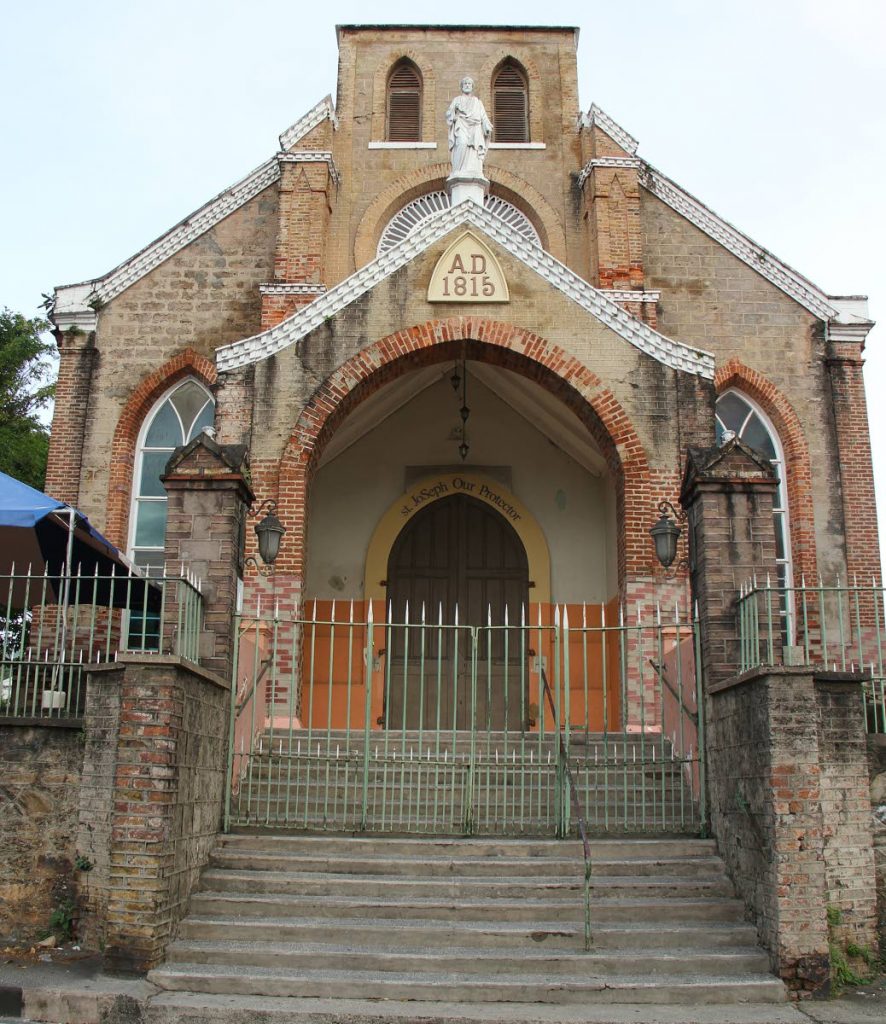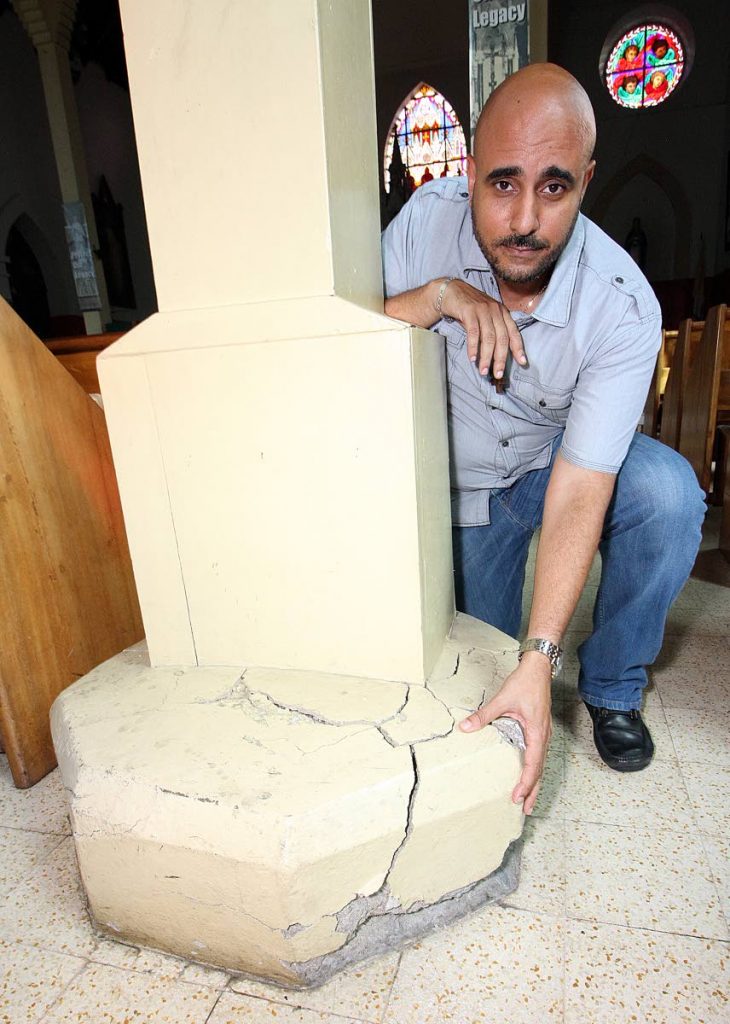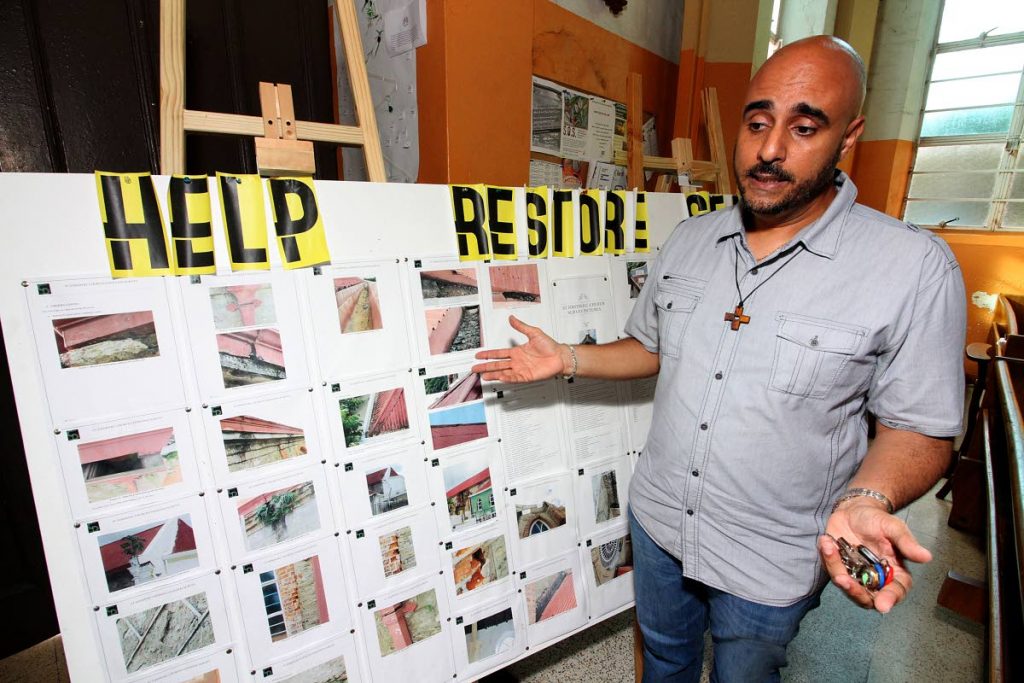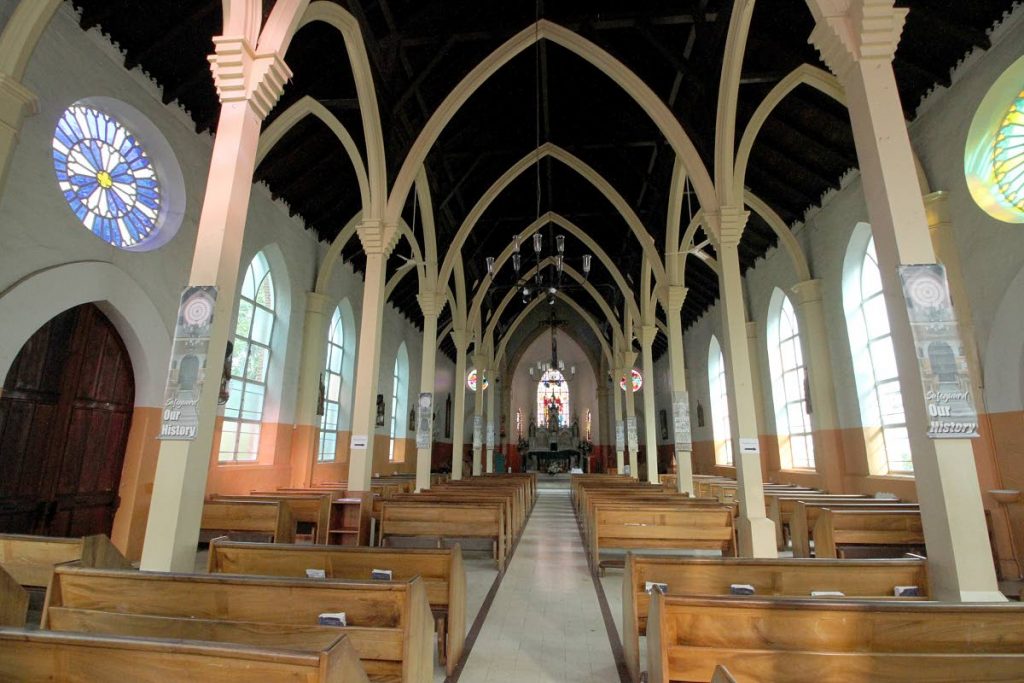Saving St Joseph

LISA ALLEN-AGOSTINI
At a glance you wouldn’t think the St Joseph RC Church was in bad shape. But the church, built in 1815, is feeling its 200 years. Termites, leaks and botched repairs in the past have conspired to leave the timbers hollow and the walls crumbling. The church plans to raise US$1.8 million (TT$12.2 million) to restore the grand old building.
Fr Matthew D’Hereaux, the parish priest, is spearheading the effort. The job came with his appointment as head of the Aspirancy Programme, part of the Catholic religious vocations portfolio of which he is director in this archdiocese. The restoration of the building, which is listed on the TT Heritage Asset Register of the National Trust, came with the job because the programme is based at St Joseph. “I couldn’t say yes to aspirancy and no to restoration. It came as one big package.”
He came to the parish on Mother’s Day. “I met a conditions survey done by an engineering firm stressing that the (structure) is deteriorating and in the construction industry the longer you take to start, the more the costs are going to mushroom over a period of time. If we’re talking about a huge cost now that is almost prohibitive, what would happen in three, four years’ time?”
Cost isn’t his top concern, however. “You don’t want the structure to deteriorate and something to happen, an earthquake, and people are damaged. That’s your nightmare. If it is bad you don’t want a rafter or a beam falling on anybody in three years’ time.”
His haste is understandable for another reason: his priority is people, not property. “I want this restoration to finish as soon as possible to get down to the real work of building community,” said the priest in an interview at his parish conference room in St Joseph last Tuesday. St Joseph RC launched an Indiegogo campaign in early November; it had netted US$1,430 (TT$9,724) by the time of the interview. It’s primarily a way for “diaspora Catholics”, particularly those with ties to St Joseph, to give to the cause. The parish and TT community are also doing their share.

Fundraising for the restoration started last year, and since May the parish has held a barbecue, movie premiere and chorale concert. Today’s church harvest proceeds will go towards it too.
The project is to take place in phases. At a projected cost of US$750,000 (TT$5.1 million), the first phase will tackle the roof, guttering and crumbling timbers.
Architect Rudylynn De Four Roberts, who is in charge of the restoration work, said in a telephone interview last Friday that the situation was similar to that at President’s House and St Michael’s Church in Maracas Valley; the roof could collapse. “The church has termite issues–nests so long, it’s a deep concern.”
St Joseph RC is a stately red brick structure overlooking the Maracas Royal Road. Its ceiling is high and arched buttresses soar over the spacious interior. The marble altar is carved with bas relief angels and chalices. On the front of the building a marble plaque reminds visitors that the church stands in what was once San Jose de Oruna, the island’s first capital. St Joseph was where the first Catholic parish was established in Trinidad, the Indiegogo campaign said.
For D’Hereaux the place is more than a historic building. “I see the role that the church has played in the lives of Catholics for the past 200 years. A sacred space, not only objectively speaking but sacred space for people when their loved ones were buried from here, when people got married, when young children made their first communion or confirmation, for Sunday worship. It means something to people. As Catholics, we identify with the Church and the building as well.”
Phase two of the restoration is to fix the walls and is estimated to cost US$600,000 (TT$4.08 million). Limestone and red clay bricks with lime mortar make up the walls but they have been subjected to either sandblasting or power washing, which stripped the bricks’ waterproof exterior patina, Roberts said. “The bricks are melting.”

Additionally, the walls have been repaired with Portland cement, which does not allow the lime mortar to “breathe”. “Lime mortar, and limestone as well, allows air to pass through and allows rising damp to evaporate. Portland cement holds all the water (in the walls). When they can’t breathe, they fall apart.”
The third phase is to turn Priest Hill Greens, the stately field adjacent to the church, into a recreational green space for rent, as a way to help pay the bills on the restoration and to maintain the property. It is estimated to cost US$450,000 (TT$3.06 million).
Phases one and two could take a year from the dry season 2019 scheduled start, said Roberts. The work would go faster if the church were unoccupied during the restoration, Roberts said, but D’Hereaux said some masses would still take place there.
It promises to be a long, hard year for the priest: restoring a crumbling building while replacing the dwindling ranks of Catholic priests. Aspirancy is a six-month period a young man spends living with others who feel called to the Church but who have not yet entered seminary. There are eight candidates in aspirancy right now, said Archbishop Jason Gordon in a Catholic News article in June. The besieged priesthood – pilloried as a bastion of paedophilia and abuse, and as an outdated institution – is in need of young men.
“Within 15 years, 28 priests now in active diocesan service will retire. We now have over ten parishes without a resident priest. It takes seven to eight years for a man to discern his vocation and be ordained. These are the facts! We have a crisis,” Gordon said.

D’Hereaux is on the front line. “Christ’s mission remains fresh in my heart. Mission is hard work, the ground is hard, I’m not going to deny that, but I think it’s possible.”
More information: www.indiegogo.com/projects/st-joseph-rc-church-t-t-restoration#/
St Joseph–landmark in TT's history
The following is a statement by the National Trust on St Joseph RC Church.
St Joseph RC Church, St Joseph is an indispensable, unique and vitally important part of the patrimony of Trinidad and Tobago.
This heritage site meets several criteria contained in the National Trust Act that necessitates its protection. Architecturally, this church’s wide welcoming arches, imposing buttresses and large lancet windows create an excellent example of the gothic revival movement. Its predominant use of locally sourced phyllite rock rather than the more widely used limestone sets it apart from other gothic revival churches such as The Holy Trinity Cathedral and The Cathedral of the Immaculate Conception. Therefore, It is unique even amongst its peers.
The structure is closely linked to the history of Trinidad’s first capital. It was built on exactly the same site as the old edifice from Spanish period. Its construction was also championed by Governor James Woodford under his infrastructural development scheme of the early 1800s. Therefore, this church is a physical representation of the transition period between Spanish and British control of the island.
The National Trust has decided to list St Joseph RC Church as a grade two property of interest where material changes may be permitted provided that similarity is maintained in all respects as its original composition, shape and form. Once listed this property will be permanently preserved as a national heritage site.


Comments
"Saving St Joseph"